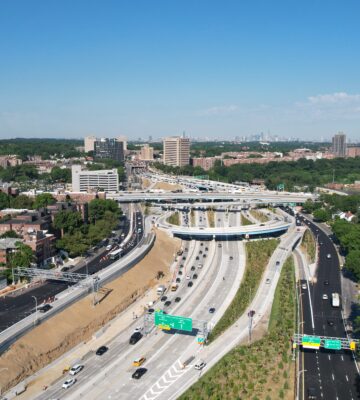H&H has served NYSDOT on the Kew Gardens Interchange program as lead designer and engineer of record for the construction of project Phases I-III and lead designer for the Design Approval, Preliminary Design, and Quality Assurance Coordination/Technical Advisor for the construction of Phase IV. The first planning phase began in 2000; the last construction contract was completed in 2022.
Used by more than 520,000 motorists each day and known for its intricately intertwined shape, the Kew Gardens Interchange is one of NYC’s most complex, important interchanges. Located in central Queens, it’s the junction of the Grand Central Parkway (GCP), Van Wyck Expressway (VWE), Jackie Robinson Parkway (JRP), Union Turnpike (UT), and Queens Boulevard (QB). The interchange also provides a connection to LGA and JFK.
This massive NYSDOT project aimed to address structural and operational deficiencies and other non-standard features along the VWE (a major north-south truck route) corridor to alleviate traffic congestion and high accident rates and improve travel times within the interchange. This was accomplished by designing 22 new or rehabilitated bridges, numerous ramps, and several miles of roadway and retaining walls – all interconnecting and providing access to the various highways and roads within the interchange.
In addition to the redesign of the interchange alignments, highway connections, and the associated bridge engineering, H&H’s scope included highway and traffic studies, operational improvements, environmental screening, as well as the associated WZTC, lighting, and drainage design.
Each of the four phases progressed independently but with the common objective that successive phases would complement the previous phase to maximize benefits to the public. This approach required facilities to be constructed in the early phases to account for future improvement work in the remaining phases. Each phase was designed to avoid impacts to existing roadways and structures, which were to remain while ensuring new construction would not hamper future improvements and replacement of these existing facilities in subsequent phases.







